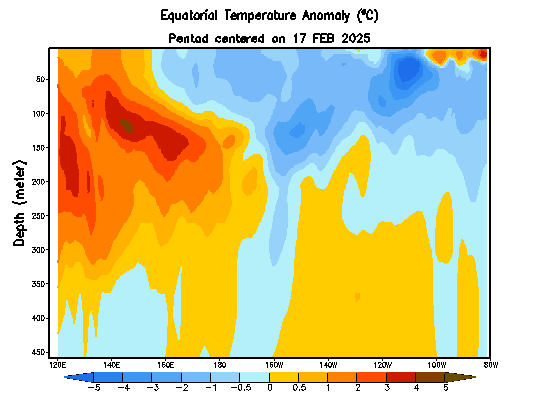An anomalous upper level low connected to the swirling mass of cold air in the Arctic looks to deliver a punch of brutally-cold air, impacting the East US the strongest.
The above image shows the GFS ensemble mean spread forecast for the 500-millibar field on the top panel, with increased spread/uncertainty among ensemble members shown by shaded colors. That spread can also be seen in the individual member colored lines. The bottom panel shows anomalies for the 500-millibar field, with cool colors indicating negative anomalies, and warm colors depicting positive anomalies.
In this image, we note a strong upper level feature pushing south from Canada, with anomaly values reading 3.27 units below normal, maximized in western New York into western Pennsylvania as the purple colors show. Judging by the numerical denotations on that bottom panel, 500-millibar values could flirt with the 500-dm benchmark along the US/Canada border, indicative of a very strong (and very cold) upper level low.
Forecasts from computer models suggest sub-zero temperatures will be the theme throughout a significant swath of the North US. Latest guidance suggests temperatures in west New York and Pennsylvania will easily drop below -10 degrees Fahrenheit, with some locations getting very close to -20 degrees F. Locations further to the west, particularly in the Midwest and Great Lakes, may also come close to -15 degrees, with some areas dropping down to that -20 degree F benchmark. All in all, this is looking dangerously cold, potentially life-threatening.
To summarize:
- The first part of a multi-wave cold blast looks to impact the North US this weekend.
- Cold weather will be maximized in the Northeast, where temperatures could reach lows of -20 degrees Fahrenheit.
- Travel is strongly advised against due to the life-threatening nature of this cold air.
- Make sure to seek out assistance now for neighbors, friends, and/or family that may have trouble sustaining heat in their homes, or could be adversely affected by this cold.
Andrew
 |
| PSU Click images to enlarge |
In this image, we note a strong upper level feature pushing south from Canada, with anomaly values reading 3.27 units below normal, maximized in western New York into western Pennsylvania as the purple colors show. Judging by the numerical denotations on that bottom panel, 500-millibar values could flirt with the 500-dm benchmark along the US/Canada border, indicative of a very strong (and very cold) upper level low.
 |
| Tropical Tidbits |
To summarize:
- The first part of a multi-wave cold blast looks to impact the North US this weekend.
- Cold weather will be maximized in the Northeast, where temperatures could reach lows of -20 degrees Fahrenheit.
- Travel is strongly advised against due to the life-threatening nature of this cold air.
- Make sure to seek out assistance now for neighbors, friends, and/or family that may have trouble sustaining heat in their homes, or could be adversely affected by this cold.
Andrew





